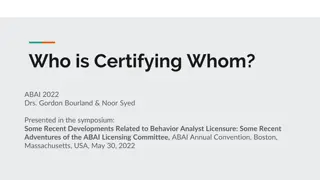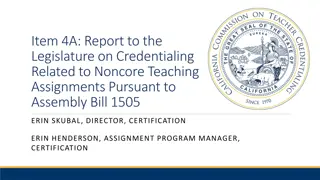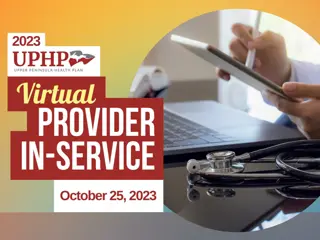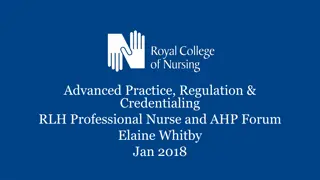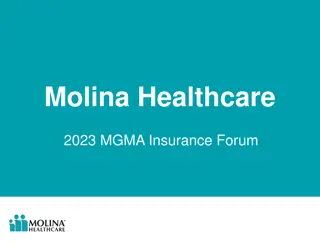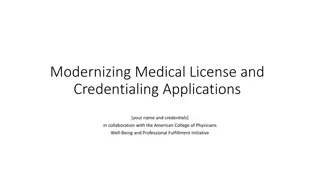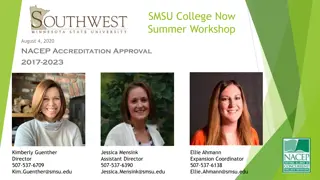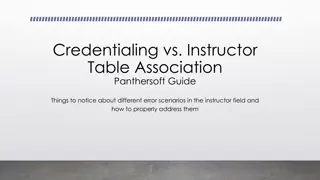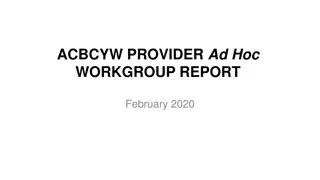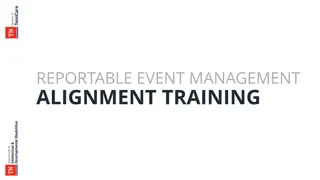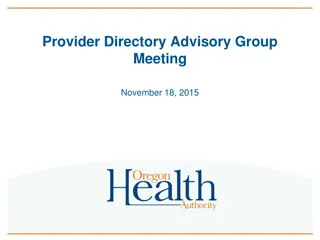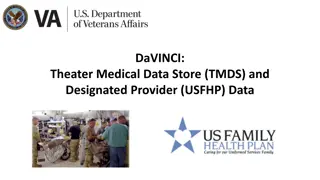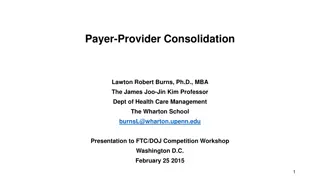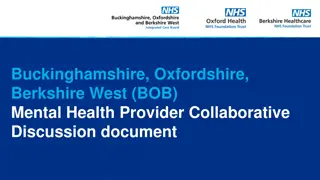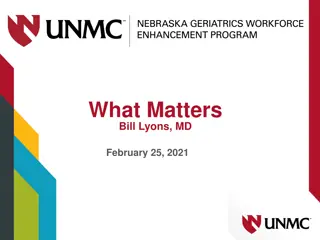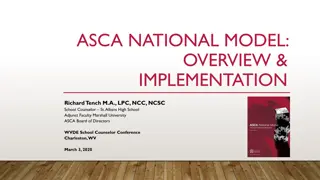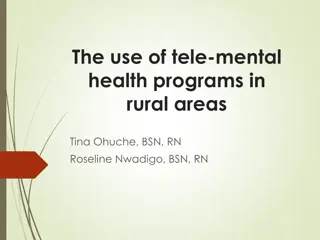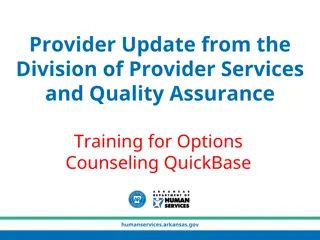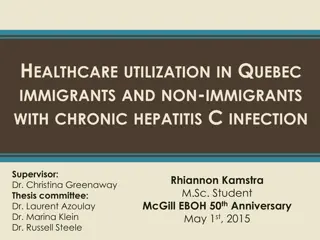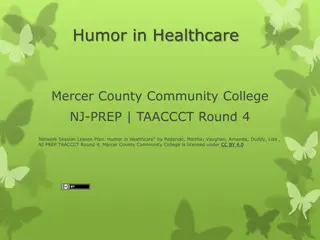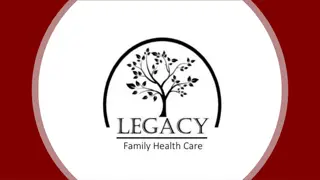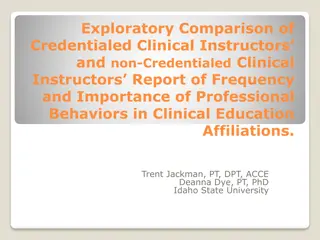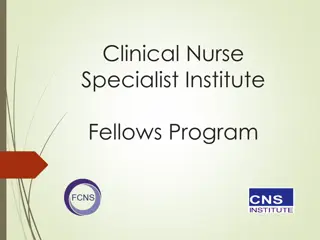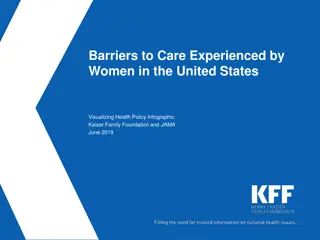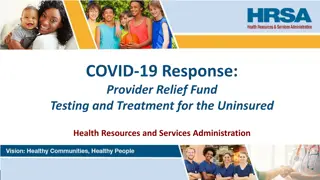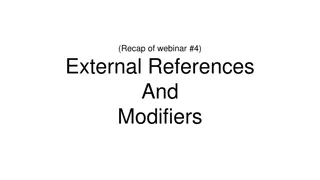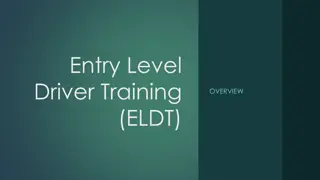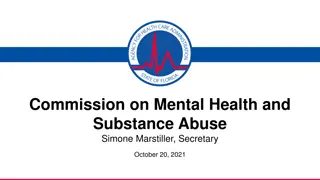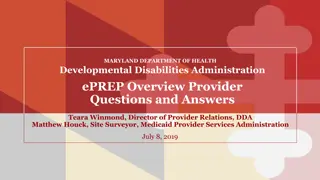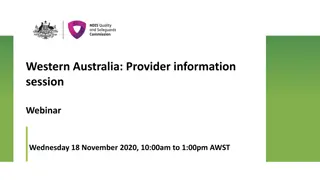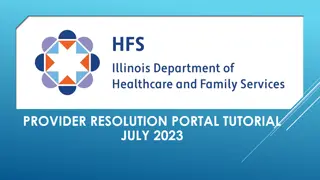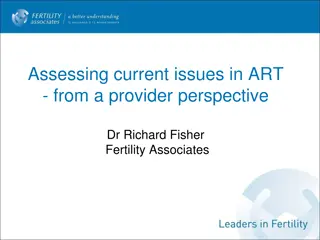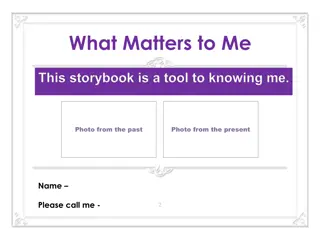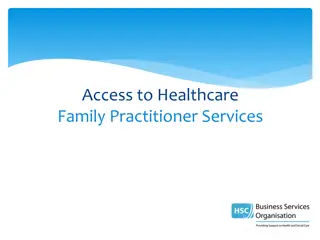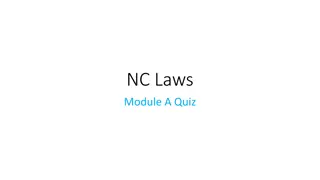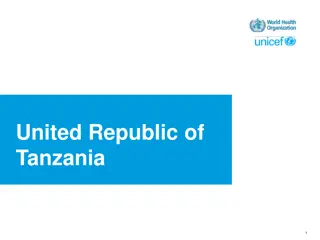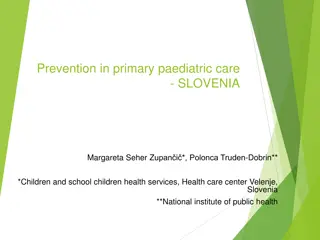Understanding Provider Credentialing and Why It Matters in Healthcare
Provider credentialing involves ensuring healthcare professionals have the necessary qualifications and competencies to practice. It is crucial for legal protection, maintaining high standards of care, and instilling confidence in patients. Credentialing involves assessing education, training, and skills, using third-party programs and organizations to verify competency. Recredentialing is important to ensure ongoing proficiency. This process helps protect patients, healthcare providers, and institutions by ensuring that only qualified individuals deliver care.
Download Presentation

Please find below an Image/Link to download the presentation.
The content on the website is provided AS IS for your information and personal use only. It may not be sold, licensed, or shared on other websites without obtaining consent from the author. Download presentation by click this link. If you encounter any issues during the download, it is possible that the publisher has removed the file from their server.
E N D
Presentation Transcript
PROVIDER CREDENTIALING Thomas E. Charlton, MD, FACEP, FAEMS Regional EMS Director, US Acute Care Solutions
Disclosures Attended during fellowship an educational conference sponsored by NREMT. Board member of the Community Paramedicine Association and Registry.
Objectives What is credentialing? Why credentialing is important. How can you credential? What you should use for credentialing. Why recredentialing is important.
What is credentialing? Non-governmental organizations provide course completion certificates Government licenses licenses the person, sometimes based on their course completion certification. The State of Ohio issues an EMS certification EMS certification which is legally equivalent to EMS EMS licensure licensure in other states. Physician and/or department credentials credentials the person to function in their role. May not always include everything in scope of practice; however may never exceed the scope of practice. May require education above and beyond licensure requirements. Avoid getting into operational considerations. course completion certificates.
Why? Legal protection Confidence in your crews Assess the department and its resources Plan for trainings Protocols Sets treatment expectations
Legal Protection I am not a lawyer. But I did stay at a Hampton Inn last night Third party curriculum that is nationally accepted. Training program is already prepared and vetted. Third party develops the testing and issues the card . Demonstrates to others that you were able to achieve educational competency. Indicates to a plaintiff s attorney that skills are kept up to date and verified.
How? Use national or international organizations. Important that you review the curriculum and materials prior to selecting a program. Use programs that have built-in expiration dates. Protocol tests can be useful. Skills verification important: Yearly airway competency Yearly pediatric drug dosing competency High risk, low frequency encounters
Third Parties This is NOT an endorsement. You need to select your own acceptable training programs. American Heart Association (BLS, ACLS, PALS) Neonatal Resuscitation Provider American Safety and Health Institute (BLS, ACLS, PALS) Prehospital Trauma Life Support (PHTLS NAEMT/ACS) International Trauma Life Support (ITLS Basic, ITLS Advanced ITLS/ACEP. International Board of Specialty Certification (Critical Care, Flight, Community Paramedic, Tactical Paramedic/Responder and others) National Registry of EMTs (EMR through Paramedic) Wilderness (multiple bodies) Volunteer Fire Insurance Service (EVOC)
What to obtain Copy of course completion certificate Copy State of Ohio EMS certificate to practice (or equivalent license paire Copy of required third-party merit badges Copy of resume Be wary of providers who leave jobs repeatedly with less than a year s experience. Then VERIFY, VERIFY, VERIFY. Use the state license look up. AHA allows straightforward card verification online. Consider discussing providers with previous medical director(s) and/or EMS chiefs.
Levels Paramedic License Certification (if applicable) BLS card ACLS card PALS/PEARS card Trauma card (ITLS/PHTLS) EVOC NIMS Skills verification EMT/AEMT License Certification (if applicable) BLS card EVOC NIMS Skills Verification
Critical Care/Flight Definitely require a course completion certification by one of the third- parties. Ensure you have documentation on equipment training and skills verification. Ensure that your third-party training does NOT violate or exceed the Ohio EMS scope of practice. At the very least everyone should know what they can and cannot do regardless of what is taught in the classroom. Consider skills verification more often that yearly. If doing neonatal transfers or high risk OB, require Neonatal Resuscitation Program.
Recredentialing Allows for re-verification of status. Forces re-assessment of skills and knowledge base. Allows you to address deficiencies in knowledge or skills. Ensure that it is done at a certain interval. DO NOT make the interval different for each person unless under some sort of discipline.
QUESTIONS? tcharlton@usacs.com


